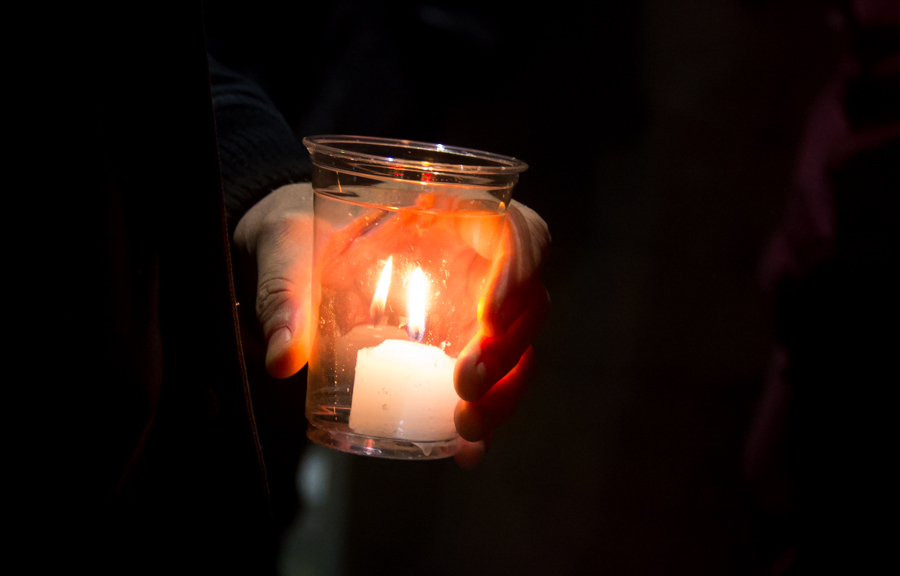On November 20, over forty people gathered at Norman Bethune Square to mark the annual Transgender Day of Remembrance. Organized by Queer Concordia, the event started with a candlelight vigil honouring trans people who have been killed as a result of transphobia and concluded with a discussion on the causes of and solutions to anti-trans violence.
The Transgender Day of Remembrance vigils began in 1999 as a response to the brutal murder of Rita Hester, a trans woman of colour living near Boston. A vigil memorializing her death the following day inspired the international Transgender Day of Remembrance, an event that has spread throughout North America and Europe, that collectively honours the thousands of trans individuals around the world that have been killed.
Shannon, who was attending the event for the first time, spoke to The Daily about the significance of the event. “[Trans] rights are human rights, and the fact that there is so much violence that permeates around the world that continues to this day deserves to be illuminated, deserves to be recognized, and deserves to be contested.”
During the vigil, one of the event organizers, Ché Baines, read the names of over eighty members of the trans community killed in the past year while candles were lit to commemorate their lives. Baines said that the vigil was a way to “continue on the legacy of people we’ve lost, and to remind those around us that events like these shouldn’t be needed.”
Looking at the circle of people formed around the candles, Baines reminded participants, “We gather on this day to remember that we also have living community members who face violence every day.”
“I kept telling myself, ‘Well, things would get better.’ […] No […] we’re getting killed on a regular basis.”
Each participant was also invited to read out the location in which and the age at which each individual died along with their names, to give a sense of the widespread nature of anti-trans violence. The list included girls as young as eight and men as old as sixty in locations from Brazil to Belarus.
What was common with most of the named victims was that they were “overwhelmingly trans people of colour,” said Baines. “And the fact that I am running this event, and not a trans woman of colour, and the fact that there are no trans women of colour here, is a shame on all of us,” Baines continued.
Participants were also welcomed to contribute their own personal experiences.
Alanna, a vigil attendee, shared, “I kept telling myself, ‘Well, things would get better. The group [of those killed] is going to get smaller. The event is going to get less important.’ No […] we’re getting killed on a regular basis, this event remains important.”
When asked why it was so important for this event to be held annually, Ash, another attendee, said, “It’s to remind us that when these things happen regularly, they also need regular attention, so they can stop happening.”
Baines added, “It’s not ending, which you would hope, by this time, the numbers would get smaller but they don’t. In fact, the list [of trans people who are killed] is getting longer every year.”
“Every year when I attend or help organize the event, I see more and more people on this list, and it makes me more and more angry, and more and more tired that we don’t take action, that we only remember and [remain] silent,” said Baines.
Baines emphasized that, in the future, events like the vigil should no longer be necessary. “[The point is to] bring our community together so that we can find ways to take action to make sure events like this don’t have to happen anymore.”

